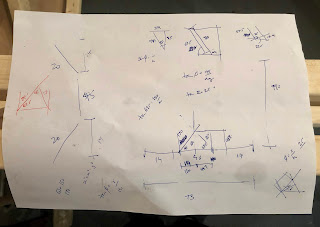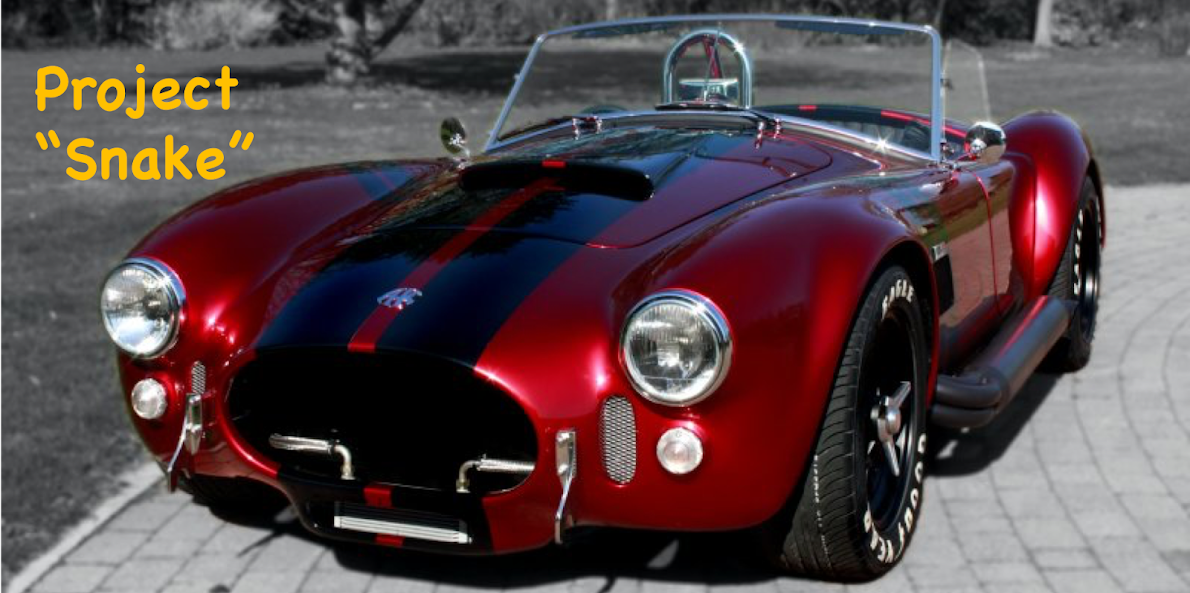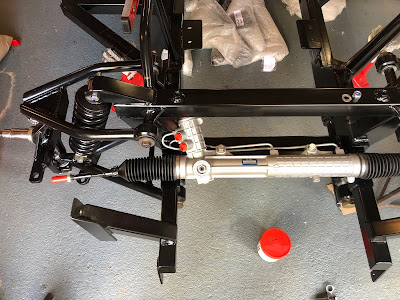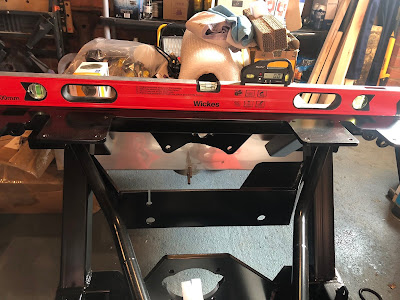When watching the Eastwood powder coating guide on YouTube they used a cunning stand to clamp an oven shelf (with parts to be coated hung from the shelf) allowing easy transfer into the curing oven.
 |
| Powder Coating Stand - photo courtesy of Eastwood.com |
 |
| Allows transfer of oven shelf and parts directly into oven for curing - photo courtesy of Eastwood.com |
I thought it was be a good project to try and make my own stand as it would allow me to brush up (learn!) on some of my metal working skills prior to using them in anger on the Cobra build.
I bought the main metal sections, 3 No 1m lengths of 25mm box section, a 1m length of 50mm by 3mm angle section and a 1m length of 25mm by 3mm plate from Ebay, some M8 roofing bolts from Toolstation and some M8 Thumbwheels and 25mm square inserts from Ross Castors.
 |
| Selection of steel sections |
I used the proverbial back of a fag-packet to work out dimensions, angles and hole positions, testing my memory of trigonometry to the full!
 |
| Detailed Engineering Fabrication Drawing.... |
I cut the steel sections to the required lengths / angles using a Rage Evolution Mitre Saw. I have used the saw many times previously for timber but this was the first time I had tested it out on metal. Have to say it cut through the various steel sections very easily and with nice clean cuts. Usual H&S rules apply - cutting metal does result in lots of tiny shards of metal being flung everywhere - wear eye protection and gloves (and I spent the next week picking small bits of metal out of my coat and jeans!!!).
 |
| Sections cut to length - starting to take shape! |
One of the main reasons I decided to have a go at this project was so that I could have a go at MIG welding. I bought a MIG welder years ago when I was thinking of attempting some body repairs on my Trans Am but never actually got round to using it!
I have a Siegen Mini-Mig 130 (which is a cheap Sealey brand). Its quite a small output welder and does not have a fully adjustable power level (2 switches giving four power levels (Min I / Min II / Max I / Max II)). As I bought it with the intention of only welding thin body panels I wasn't that bothered about a higher power machine at the time.
 |
| It was a bargain 10 years ago.... |
I did the obligatory self-learning MIG welding course by watching a number of videos on YouTube and feeling confident headed to the garage to set up the welder and hope, that after 10 years of gathering dust in my garage, it actually worked!
I had some old lengths of 5mm steel plate lurking in my garage and used a couple of these to practice laying down a decent weld bead. Well the good news was that the welder worked. The bad news is that welding is not as easy as it looks! Lots of sparks and spatter but not a lot of weld! Eventually I concluded that the lower power settings were a waste of time, and after a bit of twiddling with the wire speed control knob and experimenting with the angle of the welding torch I finally managed to produce something that looked like a reasonable bead of weld. Time to start welding up my project!
I started by trying to weld an end cap on the bottom of one of the box sections. I cut a square section of plate and tack welded it in place. So far so good. However the first attempts to weld along the joins were disastrous. The results were back to being blobby and splattery even though I had not changed the settings on the welder.
 |
| End cap tack welded in place |
I thought I had solved the issue when I realised that I had run out of gas! I was only using a small disposable Argon / CO2 gas cylinder and clearly my extensive test welding had exhausted the supply. However even after buying a couple of new cylinders, I still could not get a decent weld; still blobby and grinding down the weld revealed holes and poor penetration.
 |
| Not the best advert for welding... |
I pressed on, welding and grinding and rewelding and regrinding until I was happy enough with the end result (which used another whole bottle of gas to weld on two end caps!!!!)
 |
| After extensive welding and grinding.... |
It was then that I realised that I had got a slight twist in the cable leading to the welding torch which was enough to cause the wire feed to be a bit erratic. Once I untwisted the torch, weld quality suddenly improved - this is a relative statement, the results were far from what I would call good, but a definite improvement! A lesson learned - keep the cable from the welder to the torch as straight as possible!
Next step was to drill the holes in the bottom of the main section, the bottom brace and the bottom legs so that I could get the position of the plates either side of the bottom brace in the correct place. Using my precise engineering drawing (?!) I marked the hole locations with a metal scribe and centre punch. I drilled 4mm pilot holes and then opened out to 6mm and then to 8mm.
 |
| Drilling.... |
 |
| Drilled.... |
Final steps were to weld two sections either side of the bottom brace, to weld up both of the bottom legs and the weld the angle section onto the top of the main leg. Although my welding was still a little untidy, once ground down the joints all looked pretty solid.
 |
| Plates welded either side of bottom brace |
 |
| Bottom Legs welded together |
 |
| Almost looks like a stand! |
I tack welded a couple of nuts onto the bottom brace and onto the top shelf bracket then gave everything a wipe down with white spirit and sprayed it all with 3 coats of Hammerite Smooth.
I am actually pretty chuffed with the result - looks just like it was supposed to (which is always a bonus!!) and the thumbwheels and end caps add a nice professional looking touch (just don't look too closely at the welding).






































